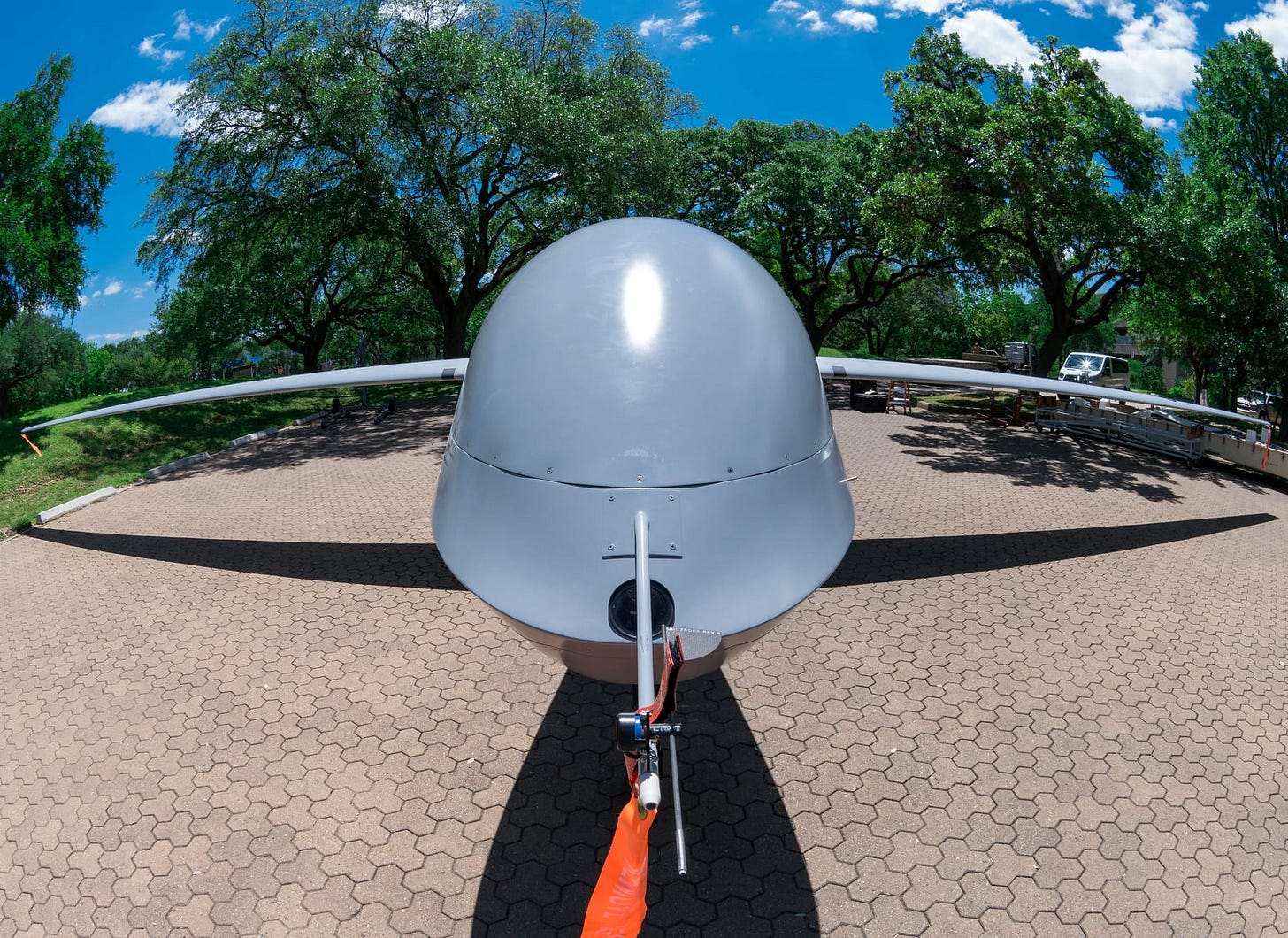DHS Flew Predator Drones Over LA Protests
What the use of military-grade surveillance aircraft says about protest, privacy, and power in America.
According to a new investigation by 404 Media, the Department of Homeland Security (DHS) deployed two Predator B drones, also known as MQ-9 Reapers, over anti-ICE protests in LA. These are the same aircraft used in military operations abroad, now turned inward to monitor American citizens exercising their First Amendment rights.
The revelation comes from air traffic control (ATC) audio obtained by an aviation tracking enthusiast known as Aeroscout. The recordings, reviewed and verified by 404 Media, show the drones flying over protest hotspots like Paramount and downtown LA. Their distinctive hexagonal flight patterns and high-altitude surveillance capabilities match those of previous CBP drone deployments, such as during the George Floyd protests in 2020.
Why does this matter?
Because it signals a growing normalization of military-grade surveillance in domestic contexts. The Predator drone is not just a camera in the sky, it’s a symbol of how far the surveillance state is willing to go. These aircraft are capable of persistent, wide-area monitoring, and while they were reportedly unarmed, their presence alone raises serious civil liberties concerns.
The Protests: A Community Rising
The protests began after a series of aggressive ICE raids at Home Depot locations across Los Angeles, including in Whittier and Huntington Park. These raids targeted day laborers and immigrant workers, sparking outrage in a city with deep immigrant roots. One particularly galvanizing moment was the arrest of union leader David Huerta, who was later released on bond.
What started as small gatherings quickly grew into citywide demonstrations. Thousands marched through downtown LA, rallying at Gloria Molina Grand Park and converging near the Federal Building. Protesters demanded an end to mass deportations and called for transparency and accountability from federal agencies. Civil rights and labor leaders joined the movement, emphasizing that these raids were not just about immigration. They were about dignity, labor rights, and the right to exist without fear.
The response from the federal government was swift and severe. President Trump deployed 2,000 National Guard troops and 700 Marines to the city, a move criticized by California Governor Gavin Newsom as an attempt to “manufacture a crisis.”
Surveillance and Suppression
The presence of Predator drones over these protests is more than symbolic. It’s a chilling reminder of how dissent is increasingly met with surveillance and force. These drones are capable of wide-area, persistent monitoring. While unarmed, their use raises serious civil liberties concerns:
What data is being collected?
Who has access to it?
And what precedent does this set for future protests?
The use of military aircraft to monitor peaceful demonstrations blurs the line between national defense and domestic policing. It also sends a dangerous message: that protest is something to be watched, not heard.
Standing with the Protesters
The people who took to the streets in Los Angeles were not criminals or threats. They were neighbors, workers, students, and families standing up for their rights and their communities. Their courage in the face of militarized policing and aerial surveillance is a reminder that democracy is not a spectator sport. It is something we must actively defend.
To protest is to care. To resist is to hope. And to be watched from the sky for doing so is a betrayal of the very freedoms this country claims to uphold.
What Can We Do?
Stay informed.
Read independent journalism and support outlets like 404 Media and local reporters.Speak up.
Contact your representatives and demand transparency and oversight of federal surveillance programs.Support the movement.
Donate to immigrant rights organizations, legal defense funds, and community groups on the ground.Share the story.
Awareness is power, and silence is complicity.
Because the sky may be watching, but so are we.



